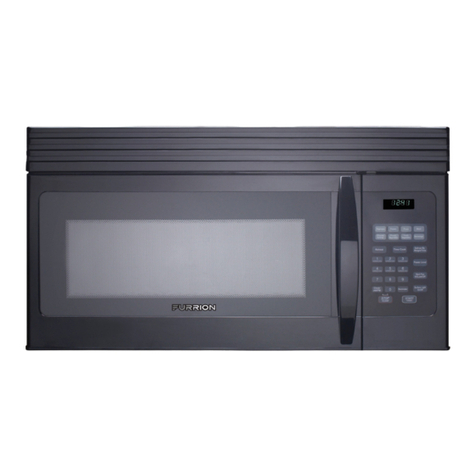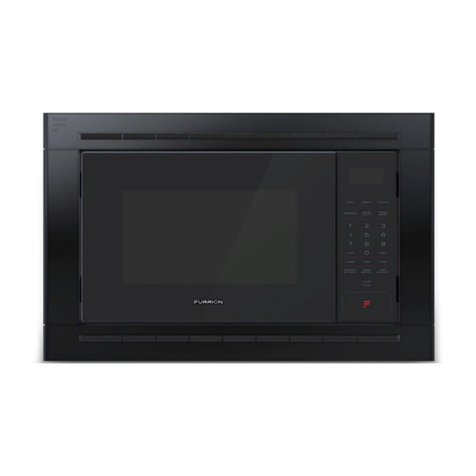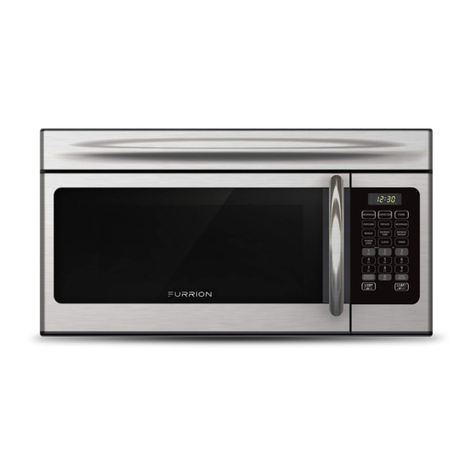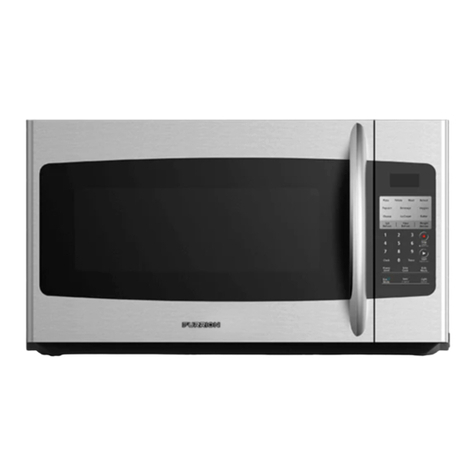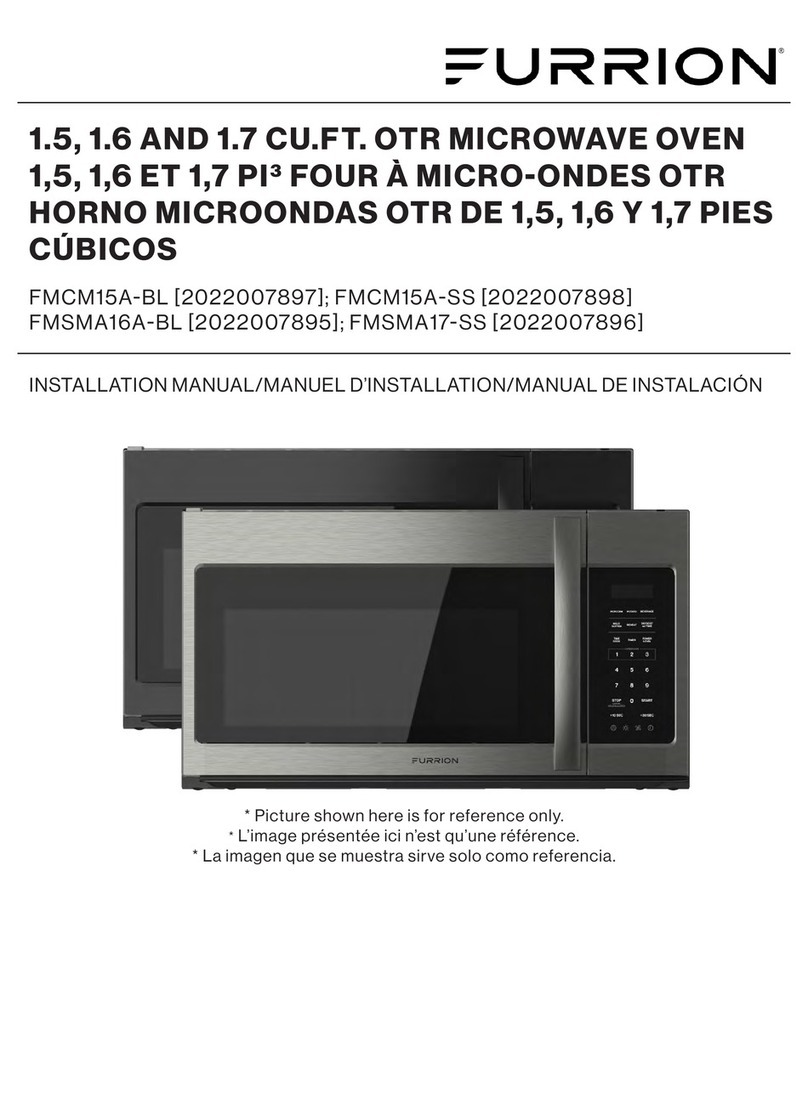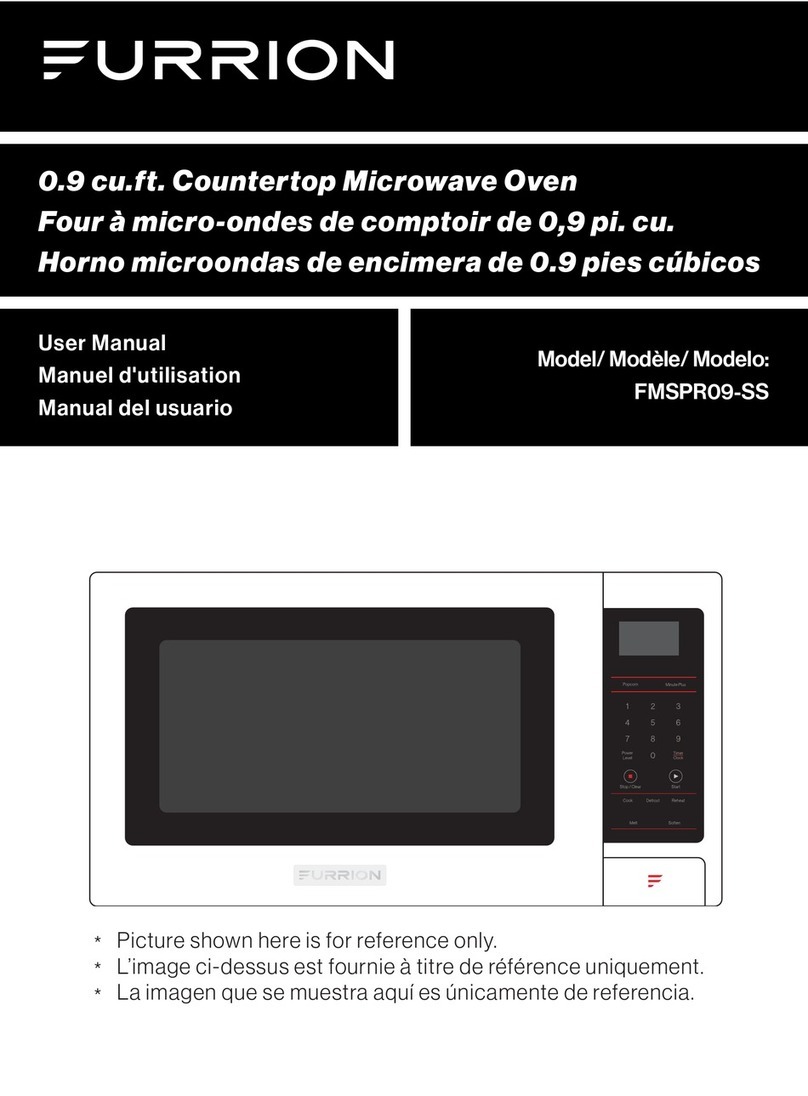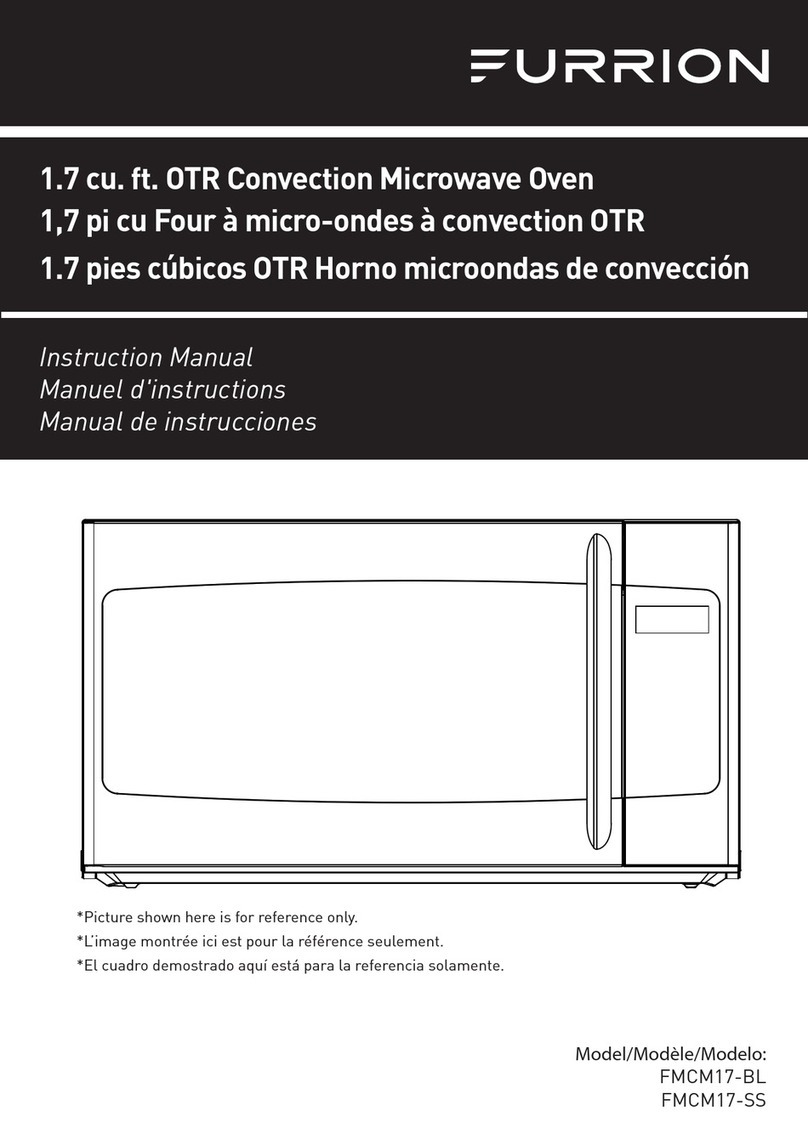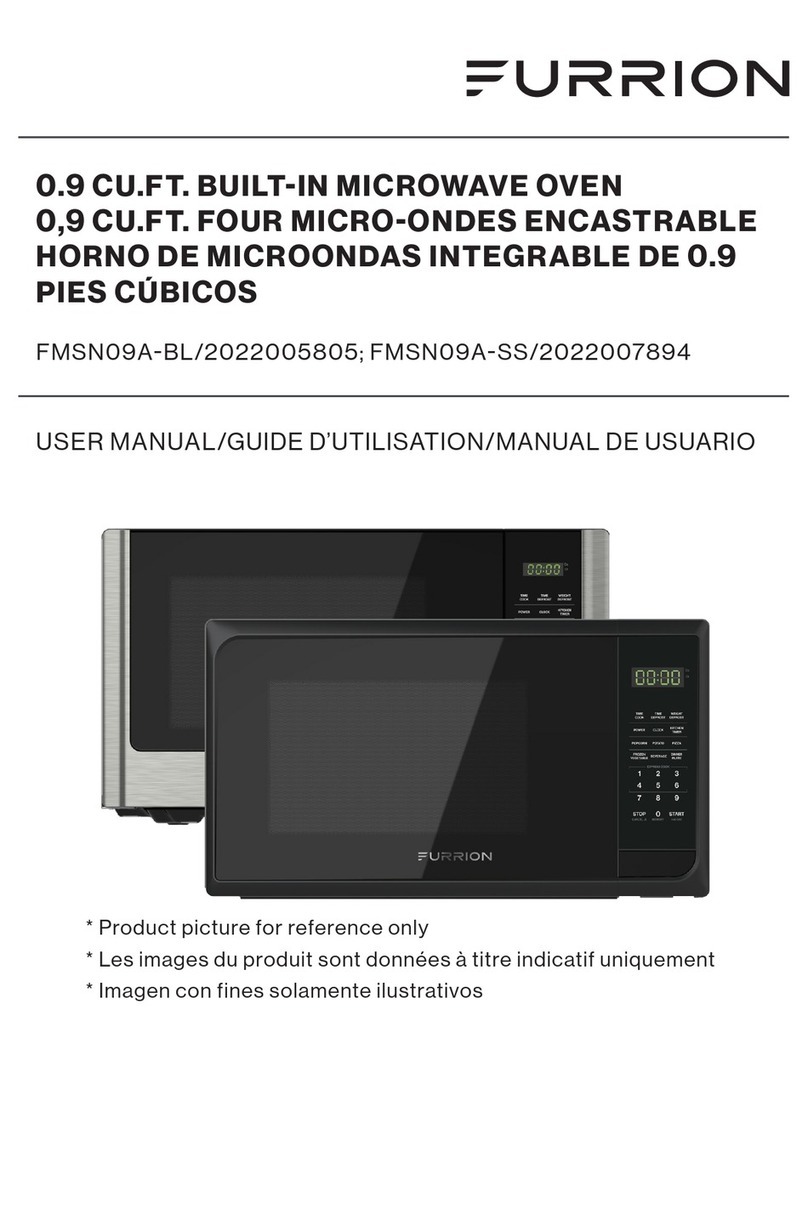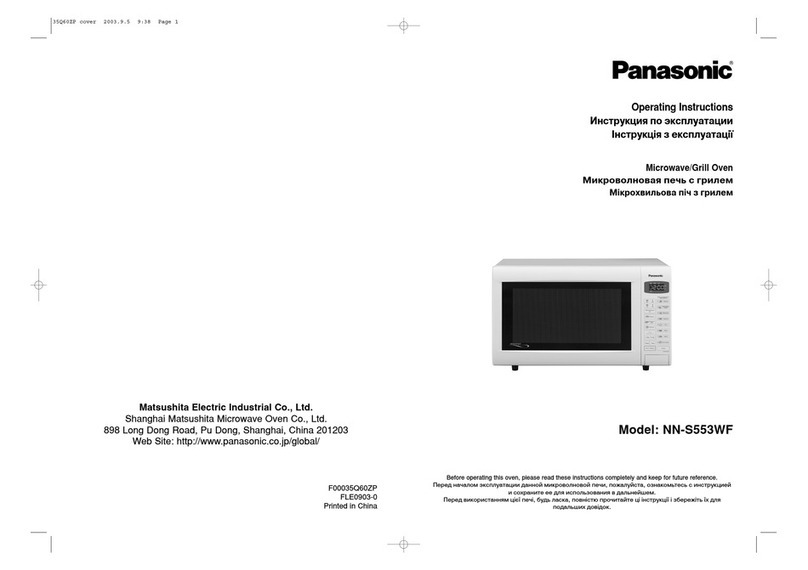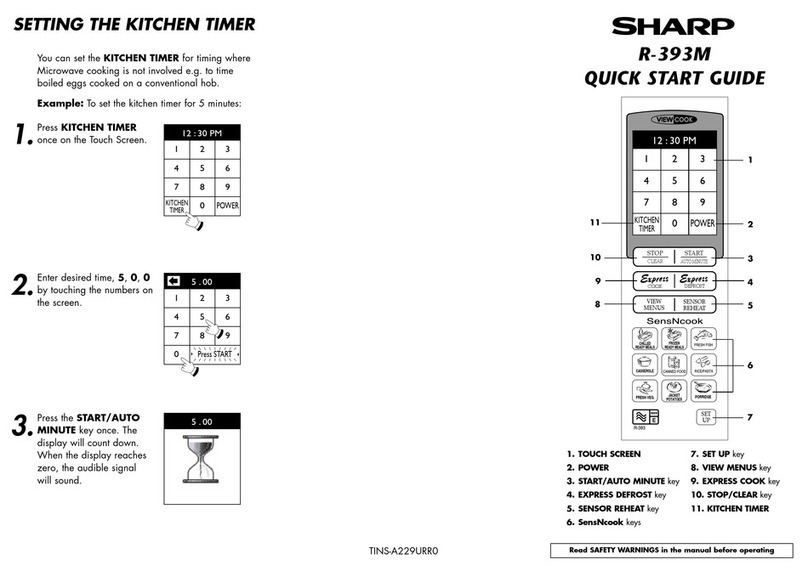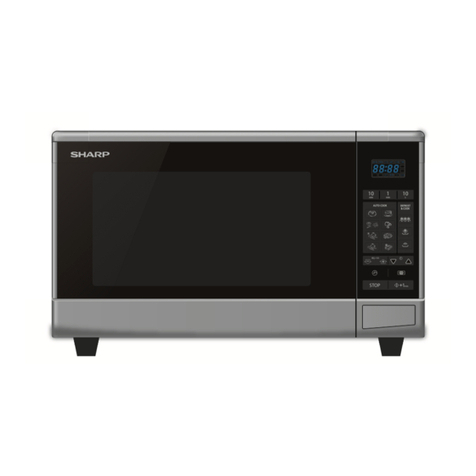
9
Heating with Lower Power Levels
Using the highest power level to heat foods with does not
always give the best results when some types of food need
slower cooking, such as roasts, baked goods or custards.
Your Oven has nine other power levels you may choose.
Example: to heat for 4 minutes at 70% power:
1. Press Microwave pad.
2. Use the number pads to enter desired heating time (cook
time may be set up to 99 minutes and 99 seconds).
3. Press Power Level pad once for power level 10 (100%
power).
4. Use the number key to change the power level to 7. PL7
appears in the display T(70 % power).
5. Touch START/+30SEC. pad.
When heating has finished you will hear beeps.
Suggested Power Levels for cooking
The 10 power levels available with this microwave will help
you to adjust to the power output best suited for the food
type you are preparing. As with any food preparation in the
microwave, it is best to follow the microwave instructions that
are printed on food packaging.
The table below provides suggested power levels for various
types of food that you can be prepare in the microwave.
Power
Level
Microwave
Output
Use To Prepare When:
10
High 100 %
• Boiling water.
• Cooking ground beef.
• Making candy.
• Cooking fresh fruits & vegetables
• Cooking fish & poultry.
• Preheating browning dish.
• Reheating beverages.
• Cooking bacon slices.
990 % • Reheating meat slices quickly.
• Saute onions, celery & green peppers.
880 % • All reheating.
• Cooking scrambled eggs.
770 %
• Cooking breads & cereal products.
• Cooking cheese dishes & veal.
• Cakes, muffins, brownies & cupcakes.
660 % • Cooking pasta.
550 %
• Cooking meats & whole poultry.
• Cooking custard.
• Cooking spare ribs, rib roast & sirloin roast.
440 % • Cooking less tender cuts of meat.
• Reheating frozen packaged foods.
330 %
• Thawing meat, poultry & seafood.
• Cooking small quantities of food.
• Finish cooking casseroles, stew & some
sauces.
220 % • Softening butter & cream cheese.
• Heating small amounts of food.
110 % • Softening ice cream.
• Raise yeast dough.
Heating with Multiple Cooking Stages
For best results, some microwave recipes call for different
power levels or different lengths of time for cooking. Your
microwave may be set to change from one stage to another
automatically (2 stages maximum).
Example: to cook food for 3 minutes at 80% power and
then 50% power for 6 minutes 30 seconds:
1. Press Microwave pad.
2. Use the number pads to enter heating time for the 1st
stage (cook time may be set up to 99 minutes and 99
seconds).
3. Press Power Level pad once.
4. Use the number keys to enter power level for the 1st stage.
PL8 appears in the display (80 % power).
5. Press Microwave pad for 2nd stage.
6. Use the number pads to enter heating time for the 2nd
stage (cook time may be set up to 99 minutes and 99
seconds).
7. Press Power Level pad for 2nd stage.
8. Use the number key to enter power level for the 2nd stage.
PL5 appears in the display (50 % power).
9. Press START/+30SEC. pad.
When heating has finished you will hear beeps .
NOTE: Power level must always be programmed for first
stage - 100% =10.
Suggestions for Getting the Best Results
To help you achieve the best possible results from your
microwave oven, read the following suggestions below:
●Storage temperature
Foods taken from the freezer or refrigerator take longer to
cook than the same foods would at room temperature.
●Size
Small pieces of food cook faster than large ones. Pieces
similar in size and shape will cook more evenly when
cooked together. For more even results, reduce the power
levels when cooking large pieces of food.
●Natural moisture
Very moist foods cook more evenly because microwave
energy heats water molecules very efficiently.
●Stirring
Stir foods such as casseroles and vegetable from the
outside to the center to distribute the heat more evenly.
This will allow the food to cook faster. Constant stirring is
not necessary.
●Turn over items
Turn over foods such as pork chops, roasts or whole
cauliflower halfway through the cook time. This will help to
expose all sides equally to microwave energy.
●Food placement
Place delicate areas of food items, such as asparagus
tips, toward the center of the turntable tray.
●Food arrangement
Arrange unevenly shaped foods, such as chicken pieces
or salmon, with the thicker or meatier parts toward the
outside of the turntable tray.
●Let the food stand
After removing the food from the microwave, cover the
food with foil or a casserole lid and let it stand to finish
cooking. This will help the food finish in the center and
avoids overcooking the out edges, The length of stand
time depends on the density and surface area of the food
items.


